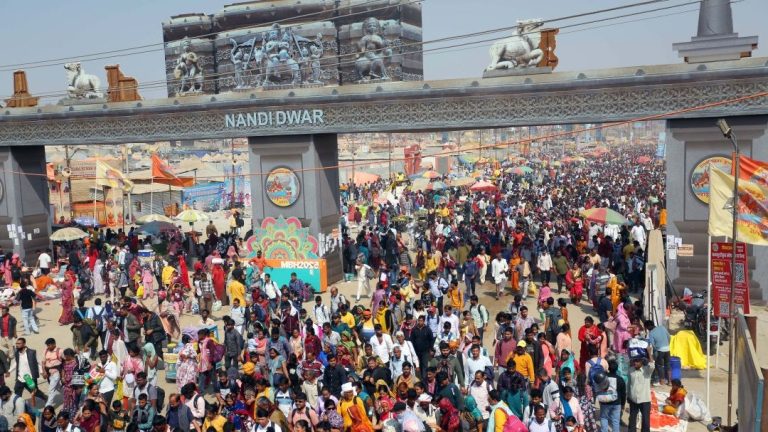Combating Misinformation and Ensuring Safety at the 2025 Maha Kumbh Mela
The 2025 Maha Kumbh Mela in Prayagraj, a significant religious gathering for Hindus, witnessed a massive influx of devotees. Amidst the spiritual fervor, authorities grappled with the challenge of combating misinformation spread through social media platforms. Deputy Inspector General of Police (DIG) Vaibhav Krishna confirmed the registration of 13 First Information Reports (FIRs) against 140 social media handles for disseminating misleading content. One such instance involved a video of a 2022 train fire in Bangladesh falsely portrayed as an incident occurring during the Kumbh Mela, resulting in 300 casualties. This proactive approach by law enforcement aimed to curb the spread of false narratives and maintain public order during the religious event. DIG Krishna emphasized the commitment to ensuring the safety and security of the millions of pilgrims attending the Mela.
With Maha Shivratri approaching on February 26, 2025, a day anticipated to draw an even larger crowd, authorities implemented comprehensive security and logistical arrangements. Crowd management strategies were at the forefront, aiming to facilitate the smooth flow of devotees and prevent congestion at key locations, particularly the Triveni Sangam, the confluence of the Ganges, Yamuna, and mythical Saraswati rivers. "Complete arrangements have been made for the upcoming Shivratri festival," DIG Krishna assured, emphasizing the preparedness of law enforcement to handle the anticipated influx of pilgrims. This included meticulous traffic management plans designed to minimize disruptions within the Kumbh Mela area and ensure seamless movement for both devotees and emergency services.
Reports indicated that over one crore (ten million) individuals had already partaken in the holy dip by Monday, February 24th. Official figures from the Uttar Pradesh government’s Information Department revealed that close to 8.773 million devotees had participated in the holy dip by Sunday, February 23rd. Chief Minister Yogi Adityanath reported an even higher number, stating that 620 million devotees had visited the Maha Kumbh Mela up to that point. These staggering figures underscore the immense scale of the religious gathering and the logistical challenges it presented to authorities. The sheer volume of attendees necessitated extensive crowd control measures, particularly at transportation hubs like the Ayodhya Dham Railway Station, to ensure the safe and efficient movement of large crowds.
The Ayodhya Dham Railway Station became a focal point for crowd management efforts, with enhanced security presence and strict protocols in place to prevent overcrowding on platforms. Deputy Superintendent of Police (DSP) Yashwant Singh elaborated on the measures, stating that over 350 personnel were deployed to manage the flow of pilgrims, implementing barricades and designated holding areas to regulate access to the platforms. "We are making regular announcements for trains so that they stay aware," DSP Singh added, emphasizing the importance of keeping passengers informed about train schedules and platform access. This proactive approach aimed to prevent confusion and ensure a smooth transition for arriving and departing devotees.
The stringent measures enforced at the railway station involved allowing passengers onto the platform only after their respective train’s arrival, ensuring the platform’s capacity wasn’t exceeded. This meticulous approach to crowd control aimed to maintain order and mitigate the risks associated with overcrowding, prioritizing the safety and well-being of the pilgrims. The authorities understood the potential for chaos and potential incidents, and their proactive strategy emphasized preparedness and efficient management of the massive crowds. These coordinated efforts reflected the commitment to facilitating a safe and positive experience for all attendees of the Maha Kumbh Mela.
The culmination of the Maha Kumbh Mela was marked by the final major holy bath (snan) scheduled for Maha Shivratri on February 26, 2025. With millions expected to participate in this culminating event, the efforts of law enforcement and organizers were focused on ensuring a smooth and incident-free experience. The combination of combating misinformation, meticulous crowd control measures, and heightened security presence aimed to create a secure environment for devotees to practice their faith and participate in this significant religious event. The successful execution of these measures demonstrated the capacity of authorities to manage large-scale events and address the complex challenges they present.


